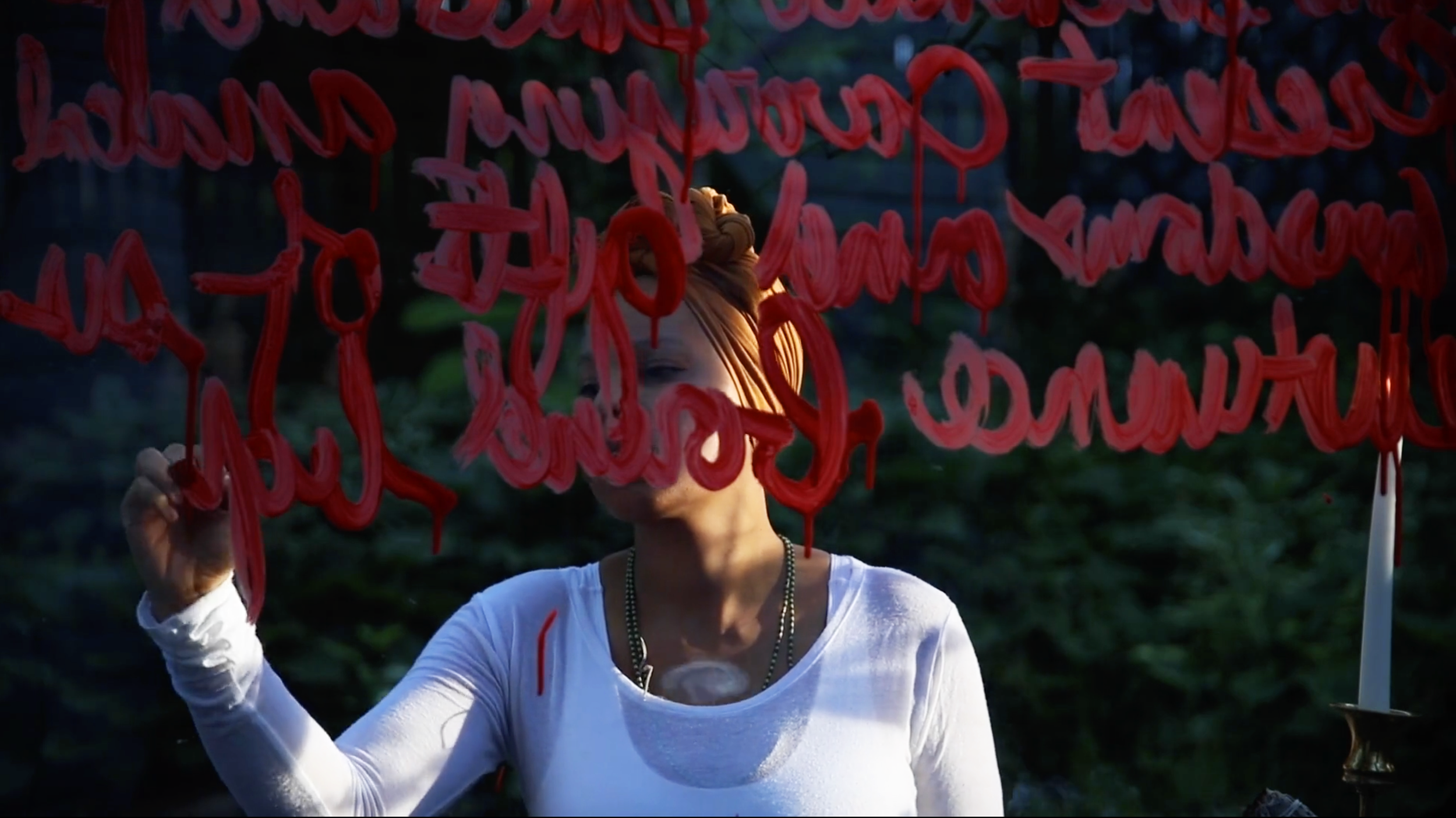Heartlines
Featuring artists:
Akea Brionne | Phylicia Ghee
Savannah Wood
March 13 – April 11, 2023
Opening Reception March 23, 6-8PM in the Julio Fine Arts Gallery
Phylicia Ghee, “Grandma; I am accused of tending to the past,” Portrait of the artist’s Grandmother
Archival pigment on Photo Rag Paper, 24” x 40”
2020
Exhibition Statement
Each year at the Julio Fine Arts Gallery, we present an exhibition that corresponds to the ‘common text’ read by Loyola’s first year students as part of the yearlong first year experience program called Messina. Throughout the year, programming is built around the text, weaving the themes of each year’s common text into the fabric of the education experience for our first years, but also for our whole campus community.
This year’s common text, The Vanishing Half by Brit Bennett, provides a rich text with many pathways for thinking about race, gender, identity, colorism, and homeland. But, at its core the book is an exploration and journey of a family. The book tells the story of a family’s past through both connection and disconnection, considering cultural legacy and the place of home, but also racial and generational trauma that the various members of that family must wrestle with as their identity is formed and reformed. In this exhibition, artists Akea Brionne, Phylicia Ghee, & Savannah Wood, like many of the main characters in The Vanishing Half, also track their family’s histories, grapple with cultural legacy, memory, and racial and generational trauma through their artwork.
Heartlines, the title of the exhibition is a callback to the title of the third section of the book. This section includes a passage of palm reading:
“‘Twins,’ Loretta said, as if the word itself contained magic. ‘You know what my mama used to say? She could always tell if a woman will have twins, right from her palm.’
Now Stella laughed. ‘What?’
‘Oh yeah, you never had your palm read? Look, I’ll show you.’ Loretta reached, suddenly, for Stella’s hand. ‘See this line right here? That’s your child line. If it forks out, it means you’ll have twins. But you got just the one. And this here, this is your love line. See how it goes deep and straight? That means you’ll be married a long time. And this one’s your life line. Look how it splits.’
‘And what’s that mean?
‘It means your life’s been interrupted.’”[1]
In this passage, Stella’s palm both portends to the future, and in it is written her fate. When we think of the concept of the ‘heartline,’ we imagine a kind of fortune-telling, future-telling, our fate written and sealed in our palms. This exhibition, and the work within it begs the question—do our heartlines connect us to the future, to our fate, or do we in fact see in them the legacy of our past, our archive, the love formed, and traumas experienced in previous generations—in essence the connection to family, to place, to self, which helps to form our own personal journey? Each of these artists trace the heartlines of the generations that have come before them—interruptions and all—and find in them the connections and the journeys that have given shape to their own.
[1] Brit Bennett, The Vanishing Half, p. 181



